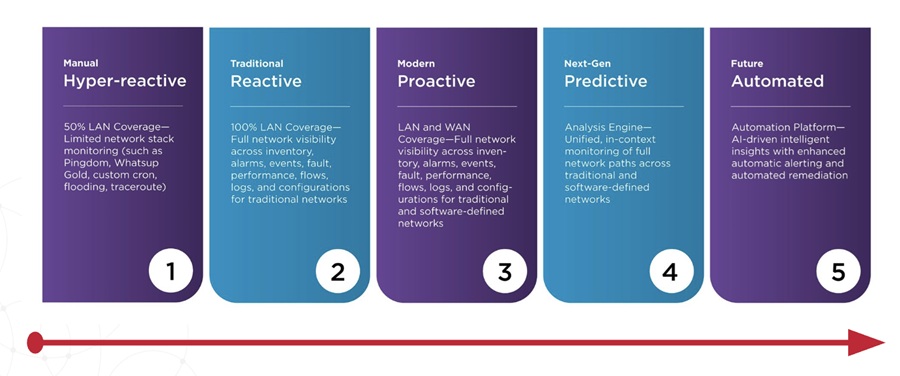
Imagine this: after a fantastic night's sleep, you walk into the office ready to attack the day. Everything seems to be going your way — your commute went faster than expected, your morning coffee was perfect, and you have some great ideas to add to an important customer presentation you're giving that afternoon. You sit down at your desk ready to go, and your computer starts acting up.
You reboot, because that's what the help desk will tell you to do. But it doesn't help, and suddenly you're overcome with frustration, fear and anxiety all at once. You take a deep breath, clear your head, and call the help desk who you are sure will get you up and running in no time (fingers crossed). However, they tell you that a lot of people are having similar issues and all IT can do is create a ticket for you and transfer it to another team to help you as soon as possible. Now the real panic sets in, and your perfect day just came crashing down.
While this may seem like an example of the perfect storm, the reality is that end users around the world experience similar situations every day. CIOs and IT leaders recognize how an overwhelmed IT staff can have a significantly negative impact on the business with delayed solutions and, in many cases, being the cause of the problems. With so many strategic goals competing for priority, they aren't quite sure where to start, and maintaining IT stability shouldn't be competing for the top slot. Below are three tips to help CIOs and IT leaders improve user productivity and ease the burden on the help desk while maintaining focus on the larger company-wide strategic goals.
IT is Employee Experience
Don't focus on incident tickets – Pay attention to the user experience instead.
In today's digitally-dependent workforce, employees rely on different devices and applications to do their jobs effectively. And there's nothing more frustrating to an employee than calling the help desk to open a ticket to fix an issue and having to wait an extended period of time for a resolution. When IT issues drag out over the course of days or weeks, employee productivity and overall morale drops while the cost of doing business and revenue loss both increase.
With this in mind, business leaders are reacting accordingly. As an example, a recent study conducted by Digital Enterprise Journal (DEJ) found that 41 percent of organizations that are taking a proactive approach to IT — by empowering both employees and IT staff to be more collaborative — improved success rates in preventing performance issues before employees were ever affected.
The study also found that these enterprises are enjoying greater IT success when they shift to monitoring IT services from the end-user perspective with proper business context, and 58 percent of the survey's respondents noted that monitoring IT performance from the user perspective is a top strategic goal for their IT transformation in 2018.
Simply put, organizations that can proactively keep tabs on their enterprise environments and the efforts of IT, along with receiving regular employee feedback about those efforts, are likely to maintain successful IT departments — while preserving (or even increasing) employee productivity by cutting down the number of issues they deal with. The opportunity with this approach is clear, but the challenge for business leaders becomes — how do we get there?
Using AI to Empower IT Staff and Employees
Use advanced capabilities to extract vast amounts of insight from these small PC devices.
Strategic-thinking CIOs and their IT departments are choosing to use advanced analytics and artificial intelligence to comprehensively monitor and assess the user experience of devices and applications across the enterprise in real-time. Leveraging the power of advanced algorithms, companies can take a more advanced approach to IT by using end-user performance data to identify IT-related problems automatically and generate associated IT tickets. In addition, the right AI-based tools can remediate minor issues as they pop up without any human intervention at all — freeing IT staff to tend to only the most pressing concerns, or better yet — more strategic and value-add assignments.
This allows IT staff to stay ahead of different hiccups with devices and applications companywide by giving them the context needed to make the best decisions possible and remediate issues quickly (sometimes automatically) and with ease.
Taking a Proactive Approach to IT
Remove your end users as a critical step in your IT support process.
When an IT department makes the leap and takes a truly proactive approach to IT, the result for the organization is a vastly more efficient IT staff and a group of employees that aren't inconvenienced when IT-related problems arise. And employees have a job to do; notifying IT about issues shouldn't be one of them.
Artificial intelligence and machine learning algorithms can sift through data and find issues faster than a human could ever hope to, which is why successful organizations are choosing to add AI into the mix to bolster the abilities of their IT staff and take the end-user out of the process. By letting the algorithms do what they're best at, businesses can reduce the overall number of IT support tickets, eliminate employee frustration related to IT disruptions and most importantly, ensure employees across every department have devices and applications consistently available so they can do their jobs effectively.
When IT departments are empowered to be champions of the employee experience and given the tools to succeed, amazing things can happen in the organization. I have seen first-hand how greater employee productivity leads to reduced operational IT spending because teams are able to focus on the most pressing concerns, as opposed to being bogged down with support tickets and placing employee issues in a queue to be dealt with later.
Automation, though still relatively new for business applications, has the power to bolster the abilities of IT staff across the world if the right dynamic is implemented. With the power of AI at the fingertips of IT departments, they'll elevate their service levels to new heights and, more importantly, significantly decrease your chances of the perfect start to your work day being derailed simply because your computer started acting up.


